Zooniverse
|
| |
 | |
Type of site | Citizen science web portal |
|---|---|
| Available in | English, German, Polish |
| Owner | Citizen Science Alliance[1] |
| Created by | Fingerprint Digital Media |
| Website |
www |
| Commercial | No |
| Registration | Optional |
| Launched | 12 December 2009[2] |
| Current status | Online |
Zooniverse is a citizen science web portal owned and operated by the Citizen Science Alliance. It is home to some of the internet's largest, most popular and most successful citizen science projects.[3] The organization grew from the original Galaxy Zoo project and now hosts dozens of projects which allow volunteers to participate in crowdsourced scientific research. It has headquarters at Oxford University and the Adler Planetarium.[4] Unlike many early internet-based citizen science projects (such as SETI@home) which used spare computer processing power to analyse data, known as volunteer computing, Zooniverse projects require the active participation of human volunteers to complete research tasks. Projects have been drawn from disciplines including astronomy, ecology, cell biology, humanities, and climate science.[5]
As of 14 February 2014, the Zooniverse community consisted of more than 1 million registered volunteers.[6] The volunteers are often collectively referred to as "Zooites".[7][8] The data collected from the various projects has led to the publication of more than 100 scientific papers.[9] A daily news website called 'The Daily Zooniverse' provides information on the different projects under the Zooniverse umbrella, and has a presence on social media.
Citizen Science Alliance
The Zooniverse is hosted by the Citizen Science Alliance, which is governed by a board of directors from seven institutions in the United Kingdom and the United States. The partners are the Adler Planetarium, Johns Hopkins University, University of Minnesota, National Maritime Museum, University of Nottingham, Oxford University and Vizzuality.[10]
Projects
Art projects
| Logo | Project | Type | Description | Launch
Date |
End Date | Website |
|---|---|---|---|---|---|---|
 |
|
Classify | A new project on Zooniverse where users help classify old scripts written in Hebrew and Arabic. This helps prepare the scripts for annotation. The second phase of this project is being planned to launch in Spring 2018, which includes annotation.[11] This project was launched by University of Pennsylvania Libraries, the Princeton Geniza Project, the Library of the Jewish Theological Seminary, and the Genizah at Cambridge University Library[12] | 8 Aug 2017 | - | [1] |
| Modern Muses | Annotate | Users can help transcribe letters between Lawrence Alloway and Sylvia Sleigh. Users transcribe one page at a time. | unknown | [2] | ||
 |
Parochial Archive Project in Rome | Annotate | Users can help transcribe documents from various Roman parochial sources dating back to the 16th and 17th century. Users transcribe one folio at a time. | 12 Dec 2017 | [3] | |
| Shakespeare's World | Annotate | Users help annotate and transcribe many documents from William Shakespeare's time. This project helps users and Oxford learn what life was like for Shakespeare and his comrades. | 10 Dec 2015 | - | [4] | |
| AnnoTate | Annotate | Volunteers on Zooniverse can help transcribe/annotate papers from many British artists. This project has over 50,000 documents from the Tate Archive. | 1 Sep 2015 | - | [5] |
Space projects
| Logo | Project | Type | Description | Launch date | End date | |
|---|---|---|---|---|---|---|
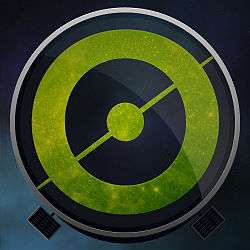 |
Galaxy Zoo | Decision tree | The fourth and latest incarnation of the Galaxy Zoo project, in which users are shown images of a galaxy and then asked a series of questions to classify its morphology. The current sample includes images of high-redshift galaxies taken by the Hubble Space Telescope and low-redshift galaxies from the Sloan Digital Sky Survey in New Mexico.[13] | 12 Jul 2007 | — | |
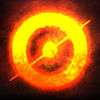 |
Solar Stormwatch | Annotation | The project uses data including video imagery from the twin STEREO spacecraft to track the formation and evolution of coronal mass ejections.[14] | 21 Dec 2009 | — | |
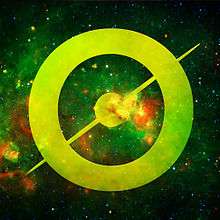 |
The Milky Way Project | Annotation | Detecting bubbles in the interstellar medium which indicate regions where the early stages of star formation are taking place. The project uses infrared images from the Spitzer Space Telescope, as well as sub-millimetre data from Herschel.[15][16] | 7 Dec 2010 | — | |
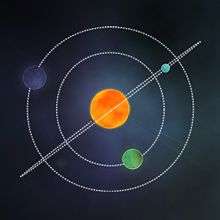 |
Planet Hunters | Annotation | Identifying extrasolar planets from the light curves of stars recorded by the Kepler space telescope.[17] | 16 Dec 2010 | — | |
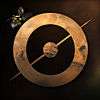 |
Planet Four | Annotation | Analyze images of the surface of Mars, taken near the Martian southern polar cap. Classifications include marking fans and blotches caused by sublimating gas and geysers underneath the carbon dioxide ice. Images come from the HiRISE camera on board the Mars Reconnaissance Orbiter.[18][19][20][21] | 8 Jan 2013 | — | |
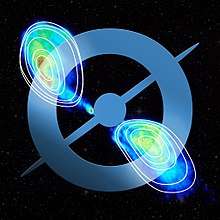 |
Radio Galaxy Zoo | Annotation | Identify radio-wavelength images of astrophysical jets in galaxies that are powered by accretion onto a black hole. The task is to correctly associate any radio components with an infrared image of the black hole's host galaxy.[22] | 17 Dec 2013 | — | |
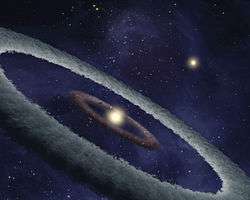 |
Disk Detective | Filtering | Identify dusty debris disks in the Milky Way galaxy that indicate stars in the process of forming planetary systems. Images come from NASA's WISE telescope, as well as the DSS2 and 2MASS surveys.[23] | 30 Jan 2014 | — | |
 |
Sunspotter | Ranking | Examine images of sunspots and rank pairs of images according to their relative complexity. The science goal is to examine how the complexity of sunspots evolves over time and how they produce eruptions. Data for the project comes from the Michelson Doppler Instrument aboard the SOHO spacecraft.[24][25] | 27 Feb 2014 | — | |
| Asteroid Zoo | Annotation | Examine sets of time-lapsed images to search for moving objects that could be undiscovered asteroids. Data comes from the Catalina Sky Survey telescopes in Arizona. The project is run in conjunction with Planetary Resources, which is focused on developing technology for asteroid mining.[26] | 24 Jun 2014 | — | ||
| Galaxy Zoo: Bar Lengths | Annotation | Identify and measure the bars in spiral galaxies from 8,000 images taken by the Hubble Space Telescope.[27] | 1 July 2015 | — | ||
| Planet Four: Terrains | Filtering | Analyze images of the surface of Mars, taken by the low resolution Context camera on board the Mars Reconnaissance Orbiter, to identify future targets for the spacecraft's higher resolution HiRISE camera to investigate.[28] | 1 July 2015 | — | ||
 |
Backyard Worlds: Planet 9 | Classifying | Help scan the realm beyond Neptune for brown dwarfs and Planet Nine. Images come from NASA's Wide-field Infrared Survey Explorer (WISE) mission.[29] | 15 Feb 2017 | — | [12] |
Nature & climate projects
| Logo | Project | Type | Description | Launch date | End date | |
|---|---|---|---|---|---|---|
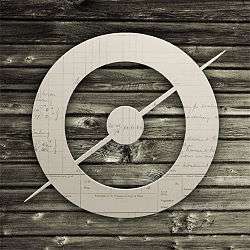 |
Old Weather | Transcription | Zooites use a special interface to digitally transcribe weather and sea ice data from the log books of United States Arctic exploration and research ships, that were at sea between 1850 and 1950.[30] The current data is the third phase of the project. | 12 Oct 2010 | — | |
| Cyclone Center | Decision tree | Classifying tropical cyclones by using a modified version of the Dvorak Technique. Volunteers are shown a series of images from infrared sensors on weather satellites and asked a number of questions to identify the type and strength of the storm.[31][32] | 27 Sep 2012 | — | ||
| Bat Detective | Pattern matching | Monitor the status of bat populations by classifying the sounds they make for echolocation and social purposes.[33] The data are originally recorded using ultrasonic microphones; calls are played back at a slower speed within the range of human hearing; data are also shown visually in the form of a spectrogram.[34] | 1 Oct 2012 | — | ||
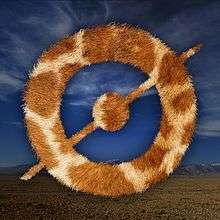 |
Snapshot Serengeti | Filtering | Classifying animals at the Serengeti National Park in Tanzania using images gathered from 225 camera traps. The purpose is to study how species are distributed across the landscape and interact with each other.[35] | 11 Dec 2012 | — | |
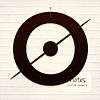 |
Notes from Nature | Transcription | Transcribing museum records to obtain historical biodiversity data.[36][37][38] | 22 Apr 2013 | — | |
| Plankton Portal | Filtering | Classifying plankton from images gathered by the In Situ Ichthyoplankton Imaging System to understand how plankton types are distributed at a variety of ocean depths. The information can be used to map oceanic carbon dioxide levels, as plankton provide a valid indicator.[39][40][41] | 27 Sep 2013 | — | ||
| Condor Watch | Annotation | Examine motion-capture images from Pinnacles National Park in northern California. Volunteers identify California condors and mark the distance to feeding sources such as animal carcasses.[42] | 15 Apr 2014 | — | ||
| Floating Forests | Annotation | Volunteers look at satellite images to search for large masses of giant kelp in coastal ocean environments.[43] | 8 Aug 2014 | — | ||
 |
Chicago Wildlife Watch | Annotation | Volunteers assist Lincoln Park Zoo to review millions of motion sensor images to identify and study wild animals in the urban environment.[44][45] | 11 Sep 2014 | — | |
| Penguin Watch | Annotation | Remote camera images of areas in the Southern Ocean and Antarctic Peninsula are tagged for detections of penguins of various species. Scientists aim to measure changes in the timing of penguin breeding, nest survival rates, the rates of predation on penguin chicks, and determining where colonies overwinter at breeding sites.[46][47] | 17 Sep 2014 | — | ||
| Chimp & See | Annotation | By identifying individual Chimpanzees from videos and highlighting examples of tool use and other behaviour patterns help scientists, from the Max Planck Institute for Evolutionary Anthropology, understand chimp culture, population size and demographics in specific regions of Africa.[48] | 22 April 2015 | — | ||
| Orchid Observers | Transcription | Photograph wild orchids throughout the summer of 2015 and/or annotate images and transcribe data from the orchid collection of the Natural History Museum, London.[49] | 23 Apr 2015 | — | ||
| Wildebeest Watch | Filtering | Interpret the movement of wildebeest in images from camera traps in the Serengeti National Park to help scientists better map their migration movements and to understand the collective intelligence of herds.[50] | 1 July 2015 | — | ||
| Whales as Individuals | Annotation | Mark details on photographs of whale flukes to identify individual animals and to help computers learn to do the same.[51] | 1 July 2015 | — | ||
| Wildcam Gorongosa | Annotation | Identify animals in trail camera photographs taken in the Gorongosa National Park in Mozambique.[52] | 1 September 2015 | — | ||
| Fossil Finder | Annotation | Document surface images from fossil bearing landscapes in the Turkana Basin in northern Kenya to identify potential sites of fossils and stone tools for further investigation.[53] | November 2015 | — | ||
| Jungle Rhythms | Transcription | Transcribe hand-drawn observations, made between 1937 and 1958, of life cycle events for over 2,000 trees in the tropical forests of the Democratic Republic of the Congo.[54] | February 2016 | — | ||
| Western Shield - Camera Watch | Annotation | Examine camera trap images from western Australia to help the Western Shield project manage the impact of feral foxes and cats on the regions' native wildlife. | 7 April 2016 | — | ||
| Snapshot Wisconsin (formerly, Wisconsin Wildlife Watch) | Annotation | Examine camera trap images from Wisconsin to identify animals and help scientists better understand trends in the distribution of wildlife populations in the state.[55] | 8 January 2016 | — | ||
Humanities projects
| Logo | Project | Type | Description | Launch date | End date | |
|---|---|---|---|---|---|---|
 |
Ancient Lives | Transcription | Transcribing texts in Greek from the Oxyrhynchus Papyri. The papyri belong to the Egypt Exploration Society and their texts will eventually be published and numbered in Society's Greco-Roman Memoirs series.[56][57][58][59] | 26 Jul 2011 | — | |
| Operation War Diary | Transcription | Transcribe British war diaries from World War I, helping historians to track troop movements, add to catalogue metadata, and delve into individual experiences of soldiers.[60][61] | 14 Jan 2014 | — | ||
| Science Gossip | Annotation | Classify illustrations from the pages of early science journals and periodicals digitized by the Biodiversity Heritage Library.[62] | 2015 | — | ||
| Emigrant City | Transcription | Explore the history of New York City by transcribing mortgage and bond ledgers of the Emigrant Savings Bank from between 1851 and 1921, held by the New York Public Library.[63] | 1 December 2015 | — | ||
| Measuring the ANZACs | Transcription | Transcribe documents to help create a comprehensive database of New Zealand war history, comprising the names, jobs, birthplaces and health at enlistment of Australian and New Zealand soldiers in the New Zealand Army during World War One.[64] | 14 August 2015 | — | ||
Biology & physics projects
| Logo | Project | Type | Description | Launch date | End date | |
|---|---|---|---|---|---|---|
| Cell Slider | Annotation | Using images from Cancer Research UK volunteers help to classify archived cancer samples.[65][66] | 24 Oct 2012 | — | ||
 |
Worm Watch Lab | Annotation | Watch videos of nematode worms to collect genetic data that will assist medical research.[67][68] The classifications offer data to researchers on brain and gene function.[69] The nematode species studied is Caenorhabditis elegans.[70] | 3 Jul 2013 | — | |
| Higgs Hunters | Annotation | Uncover the building blocks of the universe. Help search for unknown exotic particles in the Large Hadron Collider data.[71] | 26 Nov 2014 | — | ||
Retired projects
| Logo | Project | Type | Description | Launch date | End date |
|---|---|---|---|---|---|
| Galaxy Zoo Mergers | Pattern matching | Compared images of galaxies discovered by the original Galaxy Zoo to simulations to study the dynamics of interacting galaxies.[72][73][74][75] | 23 Nov 2009 | 25 Jun 2012 | |
| Galaxy Zoo Supernovae | Annotation | Used data from the Palomar Transient Factory survey to search for supernovae for quick follow-up study by telescopes around the world.[76][77][78] | 13 Aug 2009 | 3 Aug 2012 | |
| Ice Hunters | Annotation | Identified Kuiper belt objects (KBOs) for potential future targets for the New Horizons spacecraft. Also identified variable stars and asteroids. It made use of human review of subtracted images from various telescopes.[79][80] | 21 Jun 2011 | early 2012 | |
 |
Old Weather Phases One & Two | Transcription | Between October 2010 and July 2012, some 16,400 volunteers transcribed the weather data from 1,090,745 pages[81] of the log books of World War 1 era Royal Navy ships. The project generated 1.6 million weather observations that will be used to improve climate modelling.[82][83] | 12 Oct 2010 | 23 Jul 2012 |
| Andromeda Project | Annotation | Used images from the Hubble Space Telescope to identify star clusters in the Andromeda Galaxy as well as background distant galaxies hidden in the star fields.[84][85] | 5 Dec 2012 | 30 Oct 2013 | |
 |
Moon Zoo | Annotation | High-resolution images of the Moon's surface provided by the Lunar Reconnaissance Orbiter are used by volunteers to create detailed crater counts, mapping the variation in age of lunar rocks.[86][87] | 16 Feb 2009 | Mar 2016 |
 |
Space Warps | Annotation | Searched for gravitational lenses created by massive galaxies in distant space.[88][89] | 8 May 2013 | 2014 |
| Star Date: M83 | Annotation | Described the shapes and colors of star clusters in the Southern Pinwheel Galaxy (M83) using images from the Hubble Space Telescope.[90] | 13 Jan 2014 | 2014 | |
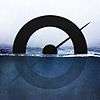 |
Whale FM | Pattern matching | Categorized the sounds made by killer whales and followed the travels of individual animals around the oceans.[31] Volunteers heard an audio clip of the whale sounds and viewed the data as a spectrogram. The project was run in conjunction with Scientific American.[91] | 29 Nov 2011 | Mar 2015 |
 |
Seafloor Explorer | Filtering | Identified species and ground cover in images of the seafloor to create a library of seafloor habitats.[31] The images were from a robotic camera that mapped the seafloor off the coast of the northeastern United States.[92] | 13 Sep 2012 | |
| SETILive | Annotation | SETILive was a project which attempted to use humans to identify potential signals from intelligent extraterrestrial life which may be missed by computer algorithms.[93] The data came from radio observations by the Allen Telescope Array of stars in the Kepler field of view.[94] | 29 Feb 2012 | 12 Oct 2014 | |
References
- ↑ "Projects". Citizen Science Alliance. Retrieved 19 November 2011.
- ↑ "The Zooniverse is Go". 12 December 2009. Retrieved 13 September 2014.
- ↑ "New Zooniverse projects – Bat Detective and Click to Cure". European Space Education Resource Office. 30 October 2012. Archived from the original on 14 October 2014. Retrieved 8 October 2014.
- ↑ Johnson, Steve (29 January 2014). "Want to aid science? You can Zooniverse". Chicago Tribune. Retrieved 2014-09-14.
- ↑ Krevans; Fortson & Brusuelas (4 December 2012). "Crowdsourcing ancient texts". IAS, University of Minnesota. Retrieved 4 December 2012.
- ↑ Shannon Hall (17 February 2014). "Zooniverse Reaches One Million Volunteers". Universe Today. Retrieved 26 November 2014.
- ↑ Croft, Ann (16 August 2007). "Galaxy Zoo - Amateurs Analysing Galaxies". Retrieved 13 August 2014.
- ↑ A.K. Finkbeiner (2010). A Grand and Bold Thing: An Extraordinary New Map of the Universe Ushering In A New Era of Discovery. Free Press. ISBN 1416552162.
- ↑ "Publications". Zooniverse. Retrieved 21 August 2013.
- ↑ "Citizen Science Alliance". www.citizensciencealliance.org.
- ↑ Zooniverse, The (2017-08-08). "New Project – Scribes of the Cairo Geniza". Daily Zooniverse. Retrieved 2017-09-03.
- ↑ Research Unit ."Team that work on the". "project". 21 December 2017 – via www.zooniverse.org.
- ↑ "Spiral, barred, elliptical and irregular: computers automatically classify galaxy shapes". RAS. 2 June 2010. Retrieved 24 August 2011.
- ↑ "Humankind sees the Sun as never before". UKSA. 7 February 2011. Retrieved 24 August 2011.
- ↑ Hurt, Robert (7 December 2010). "Help Investigate Spitzer's Milky Way!". JPL. Retrieved 23 August 2011.
- ↑ ttfnrob (7 December 2010). "Site Goes Live".
- ↑ "NASA's Kepler Mission Announces Next Data Release to Public Archive". NASA. 12 August 2011. Retrieved 23 August 2011.
- ↑ "Zooniverse Archives - Citizen Science Center". Citizen Science Center.
- ↑ James Holloway (15 January 2013). "Scientists need you to analyise images of Mars". gizmag. Retrieved 15 August 2013.
- ↑ Peter Rothman (16 January 2013). "Explore Mars and help planetary scientists understand Martian weather". Humanity+. Retrieved 15 August 2013.
- ↑ Zooniverse, The (8 January 2013). "Planet Four and Stargazing Live".
- ↑ "Find black holes while you're on the bus". CSIRO. Retrieved 18 February 2014.
- ↑ "Tagebücher der Wissenschaft » SciLogs - Wissenschaftsblogs". Tagebücher der Wissenschaft.
- ↑ Press Release - Communications Office - Trinity College Dublin Archived 5 June 2014 at the Wayback Machine.
- ↑ Trinity College Dublin launches Citizen Science Project Archived 5 June 2014 at the Wayback Machine.
- ↑ "Asteroid Zoo is Live! Now YOU can hunt for asteroids…".
- ↑ Brooke Simmons (1 July 2015). "A Galaxy Walks Into A Bar..." Zooniverse. Retrieved 6 August 2015.
- ↑ Michael Aye (29 June 2015). "Introducing Planet Four: Terrains". Zooniverse. Retrieved 6 August 2015.
- ↑ "Zooniverse". www.zooniverse.org. Retrieved 2017-04-18.
- ↑ Justin Gillis (2012). "Retrieving the weather of the past". New York Times. Retrieved 5 November 2012.
- 1 2 3 "Zooniverse". Archived from the original on 12 October 2011. Retrieved 10 October 2012.
- ↑ Rennie, Jared (27 September 2012). "Welcome to Cyclone Center!".
- ↑ Mark Kinver (Environment reporter) (3 October 2012). "Website calls for people to become 'bat detectives'". BBC News. Retrieved 2013-01-22.
- ↑ ProfKateJones (1 October 2012). "Welcome to Bat Detective!".
- ↑ nels2371 (18 May 2016). "News & Events".
- ↑ "Zooniverse". Archived from the original on 12 October 2011. Retrieved 3 May 2013.
- ↑ Yang, Sarah; Media relations (May 22, 2013). "Help wanted: Public needed to uncover clues in natural history collections". Berkeley News. Retrieved 4 June 2017.
- ↑ Hill, Andrew; Guralnick, Robert; Smith, Arfon; Sallans, Andrew; Gillespie, Rosemary; Denslow, Michael; Gross, Joyce; Murrell, Zack; Conyers, Tim; Oboyski, Peter; Ball, Joan; Thomer, Andrea; Prys-Jones, Robert; de la Torre, Javier; Kociolek, Patrick; Fortson, Lucy (20 July 2012). "The notes from nature tool for unlocking biodiversity records from museum records through citizen science". ZooKeys. 209: 219–233. doi:10.3897/zookeys.209.3472. PMC 3406478. PMID 22859890.
- ↑ "Plankton Portal". Retrieved 25 September 2013.
- ↑ Liat Clark. "Plankton Portal uses citizen science to measure ocean health". Wired Magazine. Retrieved 25 September 2013.
- ↑ "Plankton Portal uses crowd-sourcing to classify strange oceanic creatures".
- ↑ "'Condor Watch' enlists citizen scientists to help an endangered species".
- ↑ "Tracking Giant Kelp From Space".
- ↑ Zooniverse, The (5 November 2014). "Urban Animals".
- ↑ http://static.zooniverse.org/www.chicagowildlifewatch.org/downloads/chicago-wildlife-watch.pdf
- ↑ "Spy on penguin families for science - University of Oxford". www.ox.ac.uk.
- ↑ "Spy on penguin families for science".
- ↑ Lisa Feldkamp (23 June 2015). "You Can Help Chimps by Watching Videos". The Nature Conservancy. Retrieved 11 August 2015.
- ↑ "Zooniverse:Orchid Observers (UK)". Scientific American. Retrieved 13 May 2015.
- ↑ Santa Fe Institute (9 July 2015). "Call to citizen scientists to track wildebeests". Phys.org. Retrieved 6 August 2015.
- ↑ Lisa Feldkamp (14 July 2015). "Teaching Computers to Save the Whales". The Nature Conservancy. Retrieved 6 August 2015.
- ↑ Paola Bouley (15 September 2015). "No Lion Cub Left Behind - Wildcam Gorongosa Launches". Nationalgeographic.com. Retrieved 17 April 2016.
- ↑ Erin Wayman (29 November 2015). "Search for fossils from the comfort of home". Science News. Retrieved 17 April 2016.
- ↑ Larry Greenmeierl (16 February 2016). "Zooniverse:Jungle Rhythms". Scientific American. Retrieved 17 April 2016.
- ↑ Larry Greenmeierl (12 January 2016). "Wisconsin Wildlife Watch". Scientific American. Retrieved 17 April 2016.
- ↑ "Zooniverse". www.zooniverse.org.
- ↑ Boyle, Alan (28 July 2011). "Help scientists decipher 'lost' gospel". MSNBC. Retrieved 24 August 2011.
- ↑ Armchair archaeologists asked to decipher ancient papyri (Wired UK) Archived 22 February 2014 at the Wayback Machine.
- ↑ James Brusuelas (2016). "Engaging Greek: Ancient Lives." In: Bodard, G & Romanello, M (eds.) Digital Classics Outside the Echo-Chamber: Teaching, Knowledge Exchange & Public Engagement, Pp. 187–204. London: Ubiquity Press. doi:10.5334/bat.k
- ↑ "WW1 soldier diaries placed online by National Archives". 14 January 2014 – via www.bbc.co.uk.
- ↑ "Operation War Diary: First World War Unit Diaries go online to mark centenary - First World War Centenary". www.1914.org.
- ↑ "Zooniverse:Science Gossip". Scientific American. Retrieved 6 August 2015.
- ↑ Philip Sutton (4 November 2015). "Emigrant City:Two Stories". New York Public Library. Retrieved 8 December 2015.
- ↑ "Measuring the ANZACs:Crowd-sourcing research". University of Waikato. 10 August 2015. Retrieved 8 December 2015.
- ↑ "Zooniverse". Archived from the original on 12 October 2011. Retrieved 25 October 2012.
- ↑ "Charity creates world's first citizen science project to speed up cancer research". 5 December 2013.
- ↑ "Zooniverse:Worm Watch Lab". Scientific American. Retrieved 28 November 2013.
- ↑ MRC Centenary | The Worm Watch Lab
- ↑ Soderman. "New Citizen Science Opportunity: Worm Watch Lab". NASA. Retrieved 26 December 2014.
- ↑ Diep, Francie (3 July 2013). "HELP SCIENTISTS SOLVE MYSTERIES OF THE BRAIN BY WATCHING WORMS LAY EGGS". Popular Science. Retrieved 26 December 2014.
- ↑ http://www.higgshunters.org
- ↑ Johnston, Hamish (24 November 2009). "'Galaxy Zoo Mergers' opens today". Institute of Physics. Retrieved 23 August 2011.
- ↑ "Astronomers release galactic collision game". BBC. 25 November 2009. Retrieved 23 August 2011.
- ↑ mrniaboc (23 November 2013). "Zooniverse Birthday! – Galaxy Zoo Mergers".
- ↑ Galaxy Zoo Mergers : How To Take Part Archived 5 November 2013 at the Wayback Machine.
- ↑ Grossman, Lisa (17 November 2010). "Help Scientists Hunt for Exploding Stars". Wired. Retrieved 24 August 2011.
- ↑ "Hunt for Supernovae With Galaxy Zoo - Universe Today". 13 August 2009.
- ↑ chrislintott (3 August 2012). "Supernova Project Retires".
- ↑ "Citizen Scientists: Discover a New Horizons Flyby Target". NASA. 21 Jun 2011. Retrieved 23 August 2011.
- ↑ Lakdawalla, Emily (2011-06-21). "The most exciting citizen science project ever (to me, anyway)". The Planetary Society. Retrieved 2011-08-31.
- ↑ Philip Brohan (2012). "There's a green one and a pink one and a blue one and a yellow one". Oldweather.org. Retrieved 5 November 2012.
- ↑ Philip Brohan (2012). "One million six hundred thousand new observations". Oldweather.org. Retrieved 5 November 2012.
- ↑ Philip (25 October 2012). "oldWeather-Arctic launch event".
- ↑ "Andromeda Project". Retrieved 5 December 2012.
- ↑ Gildea, Terry. "U of U Astronomers Launch The Andromeda Project".
- ↑ Geere, Duncan (24 May 2010). "Science Crowdsourcing a map of the moon". Wired. Retrieved 23 August 2011.
- ↑ "NASA Invites Public to Take Virtual Walk On The Moon". NASA. 11 May 2010. Retrieved 23 August 2011.
- ↑ Alan Boyle (7 May 2013). "'Engage ! Astronomers need your assistance to detect space warps". NBC News. Archived from the original on 14 October 2013. Retrieved 15 August 2013.
- ↑ "Wanted: Citizen Scientists to Hunt 'Space Warp' Galaxies".
- ↑ Jenner, Lynn (5 May 2015). "Hubble Views Stellar Genesis in the Southern Pinwheel".
- ↑ "Archived copy". Archived from the original on 22 February 2014. Retrieved 18 February 2014.
- ↑ "Seafloor Explorer - Seafloor Explorer".
- ↑ Wakefield, Jane (29 February 2012). "Seti Live website to crowdsource alien life". BBC News Technology. Los Angeles, California. British Broadcasting Company. Retrieved 18 March 2012.
- ↑ "SETILive: 2012 Update on Jill Tarter's TEDPrize wish". 1 March 2012.
External links
| Wikimedia Commons has media related to Zooniverse. |